 Marie-Salome Duval-Chaneac Marie-Salome Duval-Chaneac
Supervisor – Dr Nong Gao, Engineering Materials
Project Funder: TWI
Project details: The New Additive Manufacturing Processes allow the development of design for light weight structure and complex shape components. The raise of these techniques now allows integrating specific functional material to a specific location of a complex structure. Multiple Material Additive Manufacturing (MMAM) is capable to decrease the global weight of a structure by avoiding assembly, reducing the number of production operations and minimize the total numbers of components in a complex structure. In order to integrate these new processes to the production factories, the effect on microstructure properties, and fatigue behaviour of MMAM materials need to be fully understood and controlled.
The final mechanical properties of MMAM are strongly depended by their microstructure. Understanding of the microstructure of MMAM components allows to control their final abilities and limitations, and thus overcoming the risk of failure in service. |
 Georgina Hollands The impact of stresses on bees Georgina Hollands The impact of stresses on bees
Supervisor – Prof Suleiman Sharkh Mechatronics
I graduated from the University of Southampton in 2017 with an Integrated Masters degree in Ecology. During this time my research focused mainly towards insects and their conservation and spatial distribution.
My PhD is designed to assess the impact of numerous stresses on bees, and in particular the effect of electromagnetic fields. The effect of these stresses will be considered for but not limited to their impacts on bee learning, memory, flight path, wing beat frequency and foraging activities. The main subject organism will be the European honey bee (Apis mellifera), however other bee taxa will also considered including bumblebee species (Bombus).
Project Funders: CDT SIS, FEE Graduate School, IFLS
Project details: Honey bees are essential ecologically, offering pollination services to at least 90% of crop species (Sass 2011). However despite their importance honey bee colonies are experiencing significant declines. Reasons for this include poor nutrition, an increase in endoparasites, increased bacteria and viral loads, as well as increased pesticide use (Traynor et al 2017). The presence of electromagnetic fields has been presented as a further factor which could be contributing to honey bee decline, due to a bees “magnetic sense” and potential close proximity to transmission lines (Wyszkowska et al 2016), however so far the research on this is limited. This PhD intends to further investigate the impact of electromagnetic fields, as well as the underlying neural and molecular mechanisms behind these impacts. |
Hameed Jehanfo  Addressing the new reality of vehicle automation in highway design Addressing the new reality of vehicle automation in highway design
Supervisor – Dr Ioannis Kaparias, Transportation
In 2006 I graduated with a BSc(Hons) in Civil Engineering from the Kwame Nkrumah University of Science and Technology. I then relocated to the UK after graduation, before joining Mouchel as a graduate engineer in 2007. After working in various UK-based civil engineering consultancy roles, I qualified as a chartered engineer with the Institute of Civil Engineers (ICE) in 2016.
In light of the apparent inevitable uptake of autonomous vehicles, my PhD theme will investigate the extent to which the requirements of highway design parameters can/or need to change, given the reduced human driver input in self-driving vehicle as compared to ‘conventional’ fully manual vehicles.
Project Funders: EPSRC
Project details: Significant strides have been made by governments and private organisation towards the successful implementation of connected and autonomous vehicles (CAVs) into mainstream road transport. The magnitude of the investments made by various stakeholders demonstrates a real determination to ensure that this ambition is realised. Although the technologies for autonomous driving are being developed to work on the highway network as currently designed, there exists an opportunity to harness the capabilities provided by self-driving vehicles to optimise highway engineering designs.
This research will investigate the influence that varying degrees of vehicle automation could have on optimising highway design features in terms of various criteria, such as traffic efficiency, safety and environmental sustainability. |
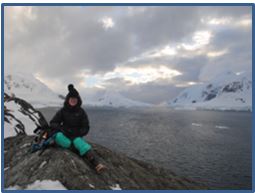 Mhairi Miller Development of behavioural deterrents to protect the European eel at dams and power stations Mhairi Miller Development of behavioural deterrents to protect the European eel at dams and power stations
Supervisor – Prof Paul Kemp, Water and Environmental Engineering
I graduated with a BSc (Hons.) in Zoology from the University of St Andrews in 2015. I then studied for an MRes in Ecology, Evolution and Conservation at Imperial College London in 2016/17. In 2017, I started my PhD Sustainable Infrastructures at Southampton.
My interests primarily concern behavioural ecology and testing behavioural responses of species to address larger evolutionary and ecological concerns.
Project Funders: EPRI, RWE npower
Project details: The European eel (Anguilla anguilla) has become a conservation concern due to the rapid and sustained decline of population numbers. Consequently, all water abstraction points are required to have screening systems to prevent ingress of adult and juvenile eels. However, these mechanical screens are not suitable in preventing the narrow, long bodied small juveniles (elvers) from entering. As a result, these eels suffer high mortalities due to impingement under high velocities. In addition, screens can often be expensive and therefore there is a growing need for more effective and suitable prevention strategies. Behavioural deterrents that use abiotic stimuli might provide a cost-effective alternative to physical screens. This study will firstly test the fundamental behavioural responses of eels to a range of abiotic stimuli such as bubbles, sound, light and electric fields. Further work will explore the effect of multi-modal behavioural stimuli with the aim to design novel behavioural devices which are effective in the real world. |
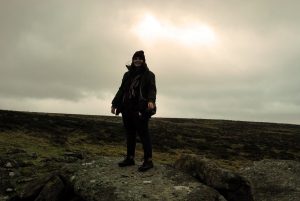 Freya Radford Managing Emerging Pollutants in Wastewater Systems Freya Radford Managing Emerging Pollutants in Wastewater Systems
Supervisor – Dr Malcolm Hudson, Environmental Change & Sustainability
In 2015 I graduated with a BSc in Marine Biology from Plymouth University, where I specialised in pollution of the marine environment. After graduation, I worked in in industry for two years as an Aquatic Ecotoxicologist, assisting with lab and outdoor mesocosm studies. In 2017, I started a PhD in Sustainable Infrastructure Systems at the University of Southampton.
My research interests cover environmental pollution, specifically the impacts of anthropogenic pollutants on aquatic ecosystems. This project will focus on Microplastics in Wastewater treatment systems and developing our knowledge of Microplastic pollution in freshwater and terrestrial environments.
Project Funders: Southern Water
Project details: In collaboration with Southern Water, this EPSRC Centre for Doctoral Training in Sustainable Infrastructure Systems (CDT-SIS) funded PhD studentship will investigate Microplastic pollution in association with the Wastewater treatment system.
Microplastic pollution is becoming an ever increasing environmental concern and while the main bulk of research has been done in the marine environment, little is known about the effects and abundance in freshwater and terrestrial systems. It has recently emerged that Microplastic removal is a significant issue in the Wastewater treatment process, particularly as a source of plastic pollution to the environment. This project will focus on the fate and levels of Microplastics in these systems and develop methods to control and reduce the pollution. The major focus will be on understanding the pathways of pollution and developing treatment strategies to remove Microplastics from these systems. Overall, it will aim to advance methods that will upgrade the Wastewater treatment process and reduce the environmental risk posed by Microplastics. |
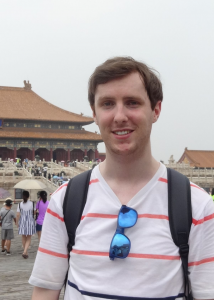 Toby Roberts Ports of the Future: identifying the separate objectives of ports and cities, and the alignments, tensions and legislation demands Toby Roberts Ports of the Future: identifying the separate objectives of ports and cities, and the alignments, tensions and legislation demands
Supervisor – Prof Ian Williams, Environmental Engineering
I studied BSc (Hons) Geography at the University of Plymouth and MSc Sustainable Development (Climate change and risk management) at the University of Exeter. Throughout my education I have enjoyed studying both the physical and human sciences relating to climate change and sustainability.
Project Funders: Ramboll
Project details: Ports are at the forefront of many of the key issues of our times, such as urbanisation, globalisation and sustainability. It is therefore of great importance that ports are able to operate more effectively in the future, whilst reducing detrimental impacts to the environments around them. Due to the close proximity of port areas to cities, tensions have developed in relation to issues such as pollution, energy usage and traffic congestion. This project aims to identify the separate objectives of ports and cities. This will hopefully identify which areas create tension and which areas can be aligned, leading to more cooperative relations. The final goal is to produce an independent and objective guidance document to assist ports and cities to focus on symbiotic successful infrastructure development |
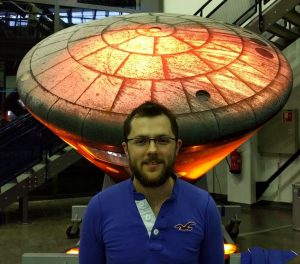 Matthew Robinson Development of an Advanced High Temperature Xenon Resistojet Thruster for Telecommunication Spacecraft Propulsion Matthew Robinson Development of an Advanced High Temperature Xenon Resistojet Thruster for Telecommunication Spacecraft Propulsion
Supervisor – Dr Scott Walker, Astronautics
I first graduated in 2014 with an MEng in Mechanical Engineering from Imperial College London. I spent the final year of this at TU Delft in the Netherlands on an Erasmus exchange year. This was a great experience as I was able to both live in another country, meeting many people from around the world, and take advantage of the interesting research themes at TU Delft for my final masters project. I undertook this in collaboration with TNO, the Dutch national research organisation for engineering and applied science, on the topic of applying topology optimisation to design structures to damp harmful vibrations during rocket launches, protecting scientific instruments.
Following graduation, I spent 2 years working as a mechanical engineer at Renishaw PLC, 18 months of which was spent in process development for Renishaw’s metal additive manufacturing machines.
From autumn 2016 to 2017, I spent a year at the European Space Agency, based again in the Netherlands, working as a graduate trainee mechanisms engineer. This exposed me to many challenges involved in designing mechanisms that must operate in space – from very low to very high temperatures, in high levels of radiation, and in hard vacuum for years.
I am now starting my iPhD on the topic of developing a high-performance, additive-manufactured electrothermal thruster for spacecraft.
Project Funders: HC Starck
Project details: The performance of a spacecraft’s propulsion system can strongly influence, among other things, the mission lifetime, capability, and cost. My project focusses on improving the performance of a particular kind of thruster, the resistojet – so called because it heats the propellant gas by electric resistive heating of a heat exchanger. Such a thruster has many positive traits: it can be designed to operate from very high to very low powers, providing high or low thrust. It can be very reliable, as it does not involve chemical reactions or complicated power conditioning. It can also be designed to use a very wide range of propellant substances. This project will specifically look at xenon gas – a propellant commonly used in high-efficiency ion engines and Hall effect thrusters. Using a single propellant will allow a future all-electric spacecraft to be simpler and lighter by having a single integrated propellant storage system, and remove the hazards associated with some toxic chemical propellants currently in common use.
A common measure of propulsion system efficiency is specific impulse, which indicates the change in a spacecraft’s velocity obtained from a given mass of propellant. This is important as higher specific impulse results in less spacecraft mass taken up by propellant, or, for the same mass, increased lifetime or capability. In the resistojet, the electrically heated gas is expanded through a nozzle like in a normal chemical rocket. In this process, the temperature of the gas entering the nozzle is the major determinant of the specific impulse. Therefore, the goal of this project is to create a resistojet using refractory metals such as tungsten, allowing temperature, hence specific impulse, to reach the maximum limit allowed by materials. This is especially important with the use of xenon, which has a high molecular mass, contributing to a low specific impulse. By targeting operating temperatures of around 3000 K, there is a potential to improve specific impulse by as much as 66% compared with current xenon resistojets.
The design of a resistojet is complex, commonly involving many extremely thin concentric tubes to create a recirculating heat exchanger. Current designs are very costly to manufacture because of this, and therefore another aspect of this research is to apply additive manufacturing to build these complicated geometries in as few steps as possible. This will be beneficial not only in the end product, but also to allow rapid iterative prototyping and testing during the project. It may also enable improved designs that could not be produced using traditional manufacturing techniques |
 Giacomo Ognibene Ground support and modelling through railway switches & crossings and transitions Giacomo Ognibene Ground support and modelling through railway switches & crossings and transitions
Supervisor – Prof William Powrie, Infrastructure
Project Funders: Network Rail
Project details: One of the most important components of the railway system are switches and crossings (S&C). They provide flexibility to the system in terms of feasible routs. However, even though they represent less than 1% of the entire route length of railways in the UK, they are also one part of the railway system with the highest number of degradation modes and failures. This results in a high cost for infrastructure managers in inspection, maintenance, delay minutes and renewal. In the UK, they take up to 20% of expenditure on track maintenance and in the worst case, may have a working life of only 3 years.
The aim of this project is the development of innovative S&C designs that allow for increased axle loads and speeds with a decrease for maintenance. This will be achieved by developing new understandings of the high complex interactions between switch and crossing geometry.
The project will consist in three different steps. First, the development of a finite element model of an existing turnouts which represent its long-term behaviour. This model will simulate the long-term behaviour of the S&C, accounting the principal damage mechanism (i.e. wear, accumulated plastic deformation). Then, the model will be calibrated through laboratory and field tests and validated. Finally, an algorithm will be applied to find an optimum design solution in terms of support stiffness and geometry. |
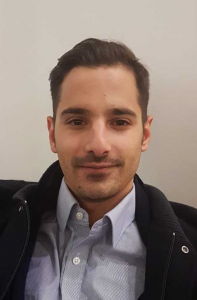 Georgios Rempelos A Whole Life Carbon Model for Railway Track System Interventions Georgios Rempelos A Whole Life Carbon Model for Railway Track System Interventions
Supervisor – Prof John Preston, Transportation
Project details: The railway renaissance in Britain over the past 20 years manifested itself on the network, among other things, to emphasise its fragility, with the long-term deterioration of the infrastructure revealing a substantial backlog of maintenance and renewal (M&R) to be undertaken. Ceteris paribus, the continual growth of the economy will most likely stimulate further increases in demand, which along with the growing fiscal constraints, put pressure on the UK rail industry to reduce its expenses. Responding to capacity constraints the introduction of more frequent, faster, and heavier trains impose increasingly onerous loading cycles, increasing deterioration rates, and subsequent risks of failures.
The aim of this research is twofold: first, assessing the potential of a range of novel track system interventions from a tactical perspective (route level) to reduce LCC and the whole-life carbon footprint, and second, to develop a complete S&C asset management model so as to study from both an asset and component perspective the LCC and whole-life carbon footprint of these complex layouts. The focus of the former is to accurately quantify and examine the prospective trade-offs between upfront and recurring investment and environmental externalities of a range of potential future track systems in order to establish the extent to which these are an improvement over existing systems at a tactical level using an existing industry-specific software, Vehicle Track Interaction Strategic Model (VTISM), along with the results of laboratory experiments. Whereas, the focus of the latter is on accurate prediction of the future asset condition at both the whole asset and component levels, in a view of accurately quantifying and examining the whole-life financial and environmental impacts of S&Cs. As such the effect of different future intervention strategies for S&Cs could be studied when data becomes available. |
 Andrew Bryden The influence of hydrodynamics on the collective behaviour of fish: an ecohydraulics approach to mitigating environmental impacts of water and energy infrastructure
Andrew Bryden The influence of hydrodynamics on the collective behaviour of fish: an ecohydraulics approach to mitigating environmental impacts of water and energy infrastructure








